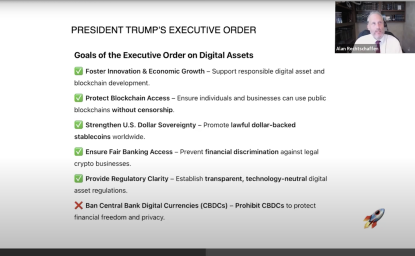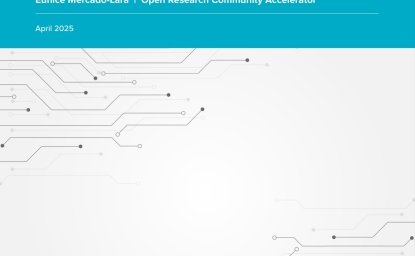"There are powerful institutional incentives in the Congress to adopt a short-term horizon: the budget cycle, the end of the fiscal year, the next election. Our daily schedules are so cram-packed with meetings on one short-term problem after another, we scarcely have time to even consider the long-term future."
--Al Gore
"I think it is fair to say that people who think that the main role of elected officials is to 'keep government off people's backs' tend not to think of government in an active role - as providing guidance, protection, investment, or even information."
-- Rob McCord
The Congressional Clearinghouse on the Future was designed to alert members to the policy implications of emerging demographic, technological, and economic trends, to help members develop legislative initiatives to address emerging policy challenges, and help members communicate with their constituents on long-range issues. The responsibility of congressional membership demands that thousands of votes are cast each year, most under rushed conditions and frequent elections. Consequently, members are forced to keep short-term constituent needs as the priority. The Clearinghouse was intended to provide members the chance to look beyond hectic schedules, annual budgets, and two-six year election cycles and develop a mechanism that allowed legislators the opportunity to do more than react to crises.
The Clearinghouse was a Legislative Service Organization (LSO) of the Congress founded in 1976 by members of Congress who wanted to bring more foresight into the legislative process. At its height, the Clearinghouse claimed bipartisan membership of more than 100 members of both the House and Senate. By the summer of 1983, 'The Global Foresight Roundtable' had produced three pieces of legislation sponsored by the Clearinghouse, none of which were passed:
- Critical Trends Assessment Act would have established a permanent office in the executive branch to facilitate long-term planning
- Global Resources, Environment and Population Act would have established an interagency council required to coordinate national planning for population and demographic change.
- "Cost-Conscious Congress" initiative would have required the executive branch to "conform" to the recommendations of the Global 2000 Report, a 3-year study of the Carter Administration on the future implications of world population, [natural] resource and environmental trends
Many avenues were attempted to establish the mandate of the Clearinghouse. One initiative asked House Committees to project their big issues for the '80s. The idea was to provide congressmen with a comprehensive catalogue of the issues anticipated by Congress. The request was made in September of 1980. It took more than two years to get the committee's views of the future and compile them. Other types of activities included the proposed development of an automated retrieval system called "FIRST" for "Futures Information Retrieval SysTem" by the Fall of 1978 (see below to access full article dated 7/1/78) - that would have made several thousand forecasts easily accessible to policymakers.
In 1984, the Congressional Institute for the Future was established as the private, non-profit companion to the Clearinghouse to meet the research needs of the caucus. The "institutes" have no legal obligation to Congress and are not subject to congressional ethics rules. By 1991, the Institute was said to have 'close ties' to capitol hill, with an annual budget of about $350,000, mostly from foundation grants. The Institute also developed partnerships with the Office of Technology Assessment and the Council of State Planning Agencies.
In January of 1994, the Congressional Clearinghouse on the Future was dissolved due to new rules for LSOs. The new rules mandated reductions in the personnel costs, forbade caucuses from accepting private donations or government grants, and required them to disclose all finances and activities.
The non-profit Congressional Institute for the Future continued until 1999.
The following information provides a brief introduction to the Clearinghouse and some of its activities.
Goals and Activities of the Clearinghouse
Congressional Oversight Authority
Emerging Policy Issues (1984)
See Memorandum on Emerging Issues
Read Article on Congress' Crystal Balls
Legislation Produced (but never passed)
Publications
Goals and Activities of the Clearinghouse
Goals:
1. To assist Members of Congress become aware of the ways in which the future is affected by today's decisions
2. To help House Committee members implement a 1976 House rule that stated -
"All committees and subcommittees (except Budget and Appropriations shall on a continuing basis undertake futures research and forecasting on matters under the jurisdiction of that committee"
3. To help Members foresee the impact of legislation on State and local governments, on industries, and on private citizens
4. To let Members identify citizen's groups eager to work in the planning processes of government
Activities to assist in meeting these goals:
1. The publication of a monthly newsletter
2. The seminar series, "Dialogues on America's Future"
3. Formation of a Congressional Talent bank, which was composed of individuals from all around the country who were willing and eager to help look at legislation from a future point of view
4. Development of a trend evaluation and monitoring program (TEAM) to monitor over 70 periodicals for future developments in areas such as: science and technology, social sciences, business and economics, and politics and government
5. Identification of citizen participation projects around the country which were working on the future
Congressional Oversight Authority
Congress formally gained its oversight authority with the Legislative Reorganization Act of 1946. In the 1970's it created the Congressional Research Service (CRS), the Office of Technology Assessment (OTA), and the Congressional Budget Office (CBO), all of which were charged with various future-oriented responsibilities.
In 1974 the house added a "foresight provision" to its rules, requiring committees to undertake futures research and forecasting. Due to this new provision, for instance, CRS set up a Futures Research Group. This Group teamed up futurists with experts in particular fields, worked with committee staffs to prepare witness lists, questions and background ifnromation for congressional "foresight" hearings. See 1976 CRS job posting for Analyst in Futures Research.
The Congressional Clearinghouse on the Future was initiated to provide a portfolio of future-oriented services to members of Congress and their consitutents.
The "sunrise" bill (HR 10421 pending in 1978) was a more ambitious approach to oversight. The bill would have required committees to incorporate impact forecasts in all legislation sent to the floor. This bill was not passed.
Emerging Policy Issues
1984 Issues for the Clearinghouse
- Need for National Water Policy
- International Trade and Investment
- Biotechnology
- In American Agriculture
- Reserach and Development
- Genetic Screening
- In American Agriculture
- Implications of Merging Computer and Telecommunications Systems
- Impacts of Demographic Shifts on
- Legislation
- Loss of Farmland and
"Desertification" - Alternative Health Care Centers/Systems
The '1984 Issues' was compiled based on the reports produced by the 200 subcommittees. The following is a sample of the replies from Congress:*
- Options for solving global problems will require careful assessment as the United States finds ifself increasingly challenged by European and Japanese industry, as well as competition in agriculture.
Simple concern for the maintenance of a strong defense establishment must be expanded to include industrial capacity, agricultural productivity, energy self-sufficiency, materials availability and infrastructure repair. At the same time the readiness of the armed forces has been under scrutiny, particularly in manpower, training and equipment. - The challenges posed by the far-reaching wealth and power of multinational corporations must be addressed, since they could well affect decision-making functions around the world. The need for a long-term approach to national policy matters will demand coordinated longer-range efforts in transportation, manpower training, environmental protection, critical materials, housing, education and health.
- The consideration of the role of government as major protector against risks in areas such as regulation, welfare, Social Security and assistance to ailing industry must be met and dealt with.
- Concerns must be met in the national productivity and the health of the industrial base. The decline of traditional industries - automobile and steel manufacturing, for example - has provoked serious discussion; but the stress that continued decline will have on the future must be analyzed, with particular attention paid to automation, a major educational need.
- The national well-being depends to a large extent upon the health of roads, railways, waterways, bridges and water and sewer lines. Will their use decline, or will increased decentralization require yet more investment?
- The fast-proliferating communications technologies may be difficult to evaluate or anticipate, but the protection of privacy, the growing tendency to replace man with machine and the growth of video may entail unforeseen consequences in the fragmentation of national concensus.
- The gradual disappearance of American farmland is of great concern to Congress, as is ground water depletion and pollution.
- Global desertification and deforestation have received attention, but will demand more as these trends have implications not only for species survival, but also for climate, food supply and wood products.
- Medical cost containment continues to be now and in the years ahead, a continuing focus of study. Interest appears to be growing in new approaches to health care that should be embraced.
- The problem of financial support for the aged as well as other nonworking citizens demands attention in the years to come. The impact of crime, too, upon the elderly will share that attention.
- The phenomenal growth of litigation means great costs and a tremendous burden on the court system.
- Technological advances have raised new questions about definitions of life, the right to die, the patenting of life forms and access to life-saving technologies.
*This information was found in an Editorial in the Nashville Banner dated Tuesday, February 1, 1983.
Legislation
H.R. 3070, the "Critical Trends Assessment Act" would authorize an Office of Critical Trends Analysis in the Executive Branch with a $5 million annual budget. The office would make recommendations to the President and establish an Advisory Council to promote public dialogue on critical trends and alternative futures. · The office would publish a report every four years identifying critical economic, technological, demographic, political and environmental trends over a 20 year period · The report would be submitted to both Houses of the Congress, detailing the effect of existing and alternative government policies on these trends. The bill was not passed.
S. 1025 and H.R. 2491, the Hatfield-Ottinger "Global Resources, Environment and Population Act," would coordinate national planning for population and demographic change and establish an interagency council to report annually to the President and Congress. · The report would analyze current and foreseeable trends in global demographics · Based on this analysis, the report would evaluate the adequacy of available resources to meet human and economic needs in the future.
H.J. Res. 248, called for the Executive Branch to "conform" to the recommendations of the Global 2000 Report, a 3-year study of the Carter Administration on the future implications of world population, resource and environmental trends.
- Congressional Clearinghouse on the Future
- Congressional Clearinghouse on the Future
- Congressional Clearinghouse on the Future
- Congressional Clearinghouse on the Future
- Congressional Clearinghouse on the Future
- Congressional Clearinghouse on the Future
- Congressional Clearinghouse on the Future
- Congressional Clearinghouse on the Future

Science and Technology Innovation Program
The Science and Technology Innovation Program (STIP) serves as the bridge between technologists, policymakers, industry, and global stakeholders. Read more

Explore More
Browse Insights & Analysis
The Bybit Heist: What Happened & What Now?


